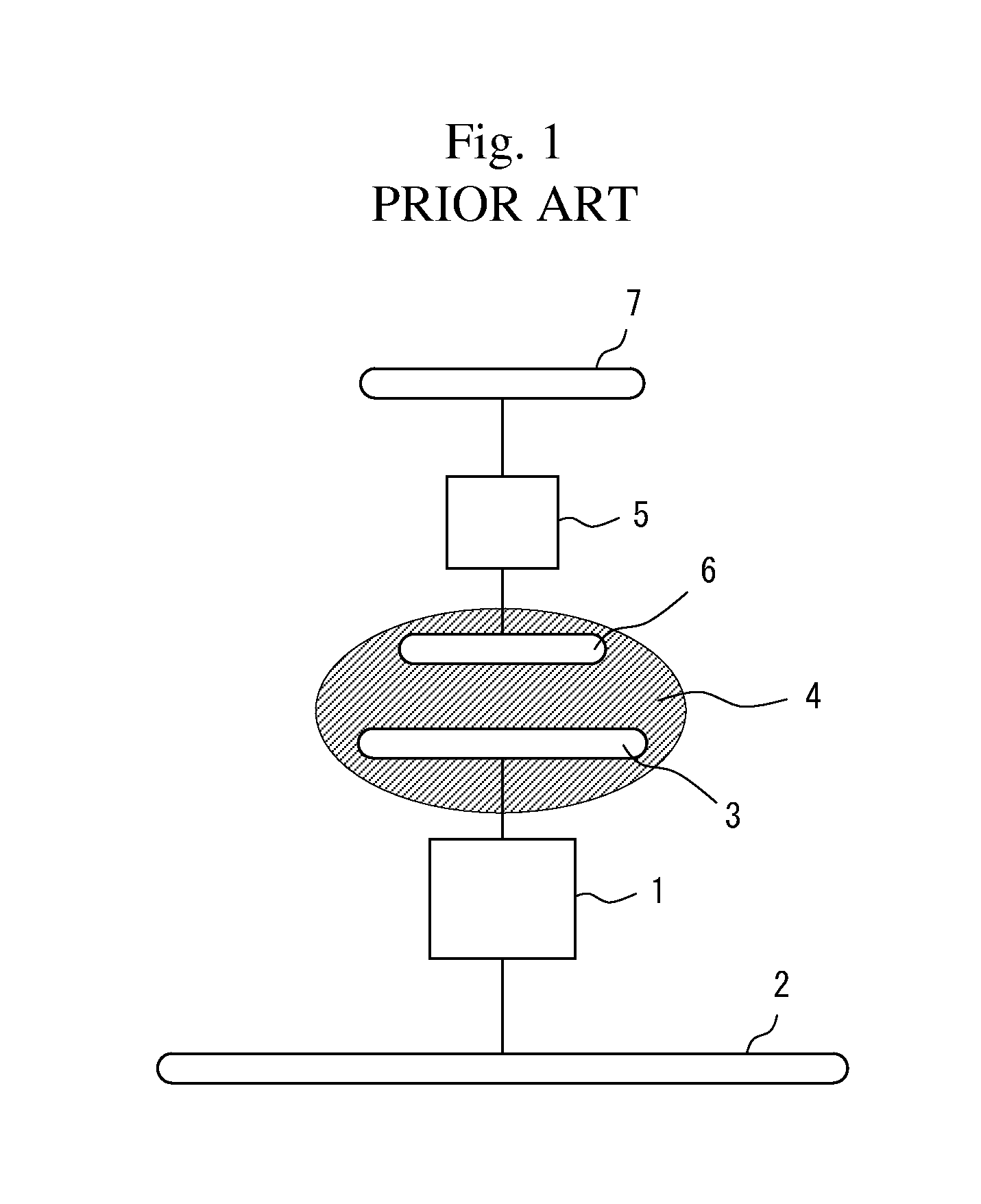Power Transfer System and Noncontact Charging Device
a technology of power transfer system and charging device, which is applied in the direction of transformers, inductances, transportation and packaging, etc., can solve the problems of unnecessary electric field, increased voltage applied to each electrode, and reduced flexibility of arrangement of both power transmission device and power reception devi
- Summary
- Abstract
- Description
- Claims
- Application Information
AI Technical Summary
Benefits of technology
Problems solved by technology
Method used
Image
Examples
first embodiment
[0039]The configuration of a power transfer system according to a first embodiment will be described with reference to FIG. 2 to FIG. 4. FIG. 2 is a cross-sectional view that conceptually shows a relevant portion of a power transfer system 401. The power transfer system 401 includes a power transmission device 101, a power reception device 201 and an auxiliary sheet 301. A high-voltage side conductor 11 is formed near the upper surface of a casing 10 of the power transmission device 101. A low-voltage side conductor 12 is formed near the lower surface of the casing 10 of the power transmission device 101. In addition, an alternating voltage generating circuit 13 is provided inside the casing 10 of the power transmission device 101 and applies an alternating voltage between the high-voltage side conductor 11 and the low-voltage side conductor 12. In this example, the low-voltage side conductor 12 is widely arranged along the lower surface of the casing 10.
[0040]A high-voltage side co...
second embodiment
[0063]FIG. 7A and FIG. 7B are configuration diagrams of an auxiliary sheet 302 used in a power transfer system according to a second embodiment. FIG. 7A is a top view of the auxiliary sheet 302. FIG. 7B is a cross-sectional view of the auxiliary sheet 302. A capacitive coupling conductor 32 is formed so that a mesh material formed by stamping a metal foil, such as copper foil, is coated with an insulating film, such as resin, foamed material, glass, and ceramics. By forming the inside capacitive coupling conductor 32 in a mesh shape, adhesion between the capacitive coupling conductor 32 and the insulating film improves, thus making it difficult to peel off.
[0064]The configuration of the power transmission device 101 and power reception device 201, other than the auxiliary sheet, is similar to that shown in FIG. 2. In this way, with the mesh capacitive coupling conductor 32, a stray capacitance between the low-voltage side conductor 22 of the power reception device 201 and the capaci...
third embodiment
[0065]FIG. 8A and FIG. 8B are configuration diagrams of an auxiliary sheet used in a power transfer system according to a third embodiment. FIG. 8A is a top view of the auxiliary sheet 303. FIG. 8B is a cross-sectional view of the auxiliary sheet 303. A capacitive coupling conductor 33 is formed so that a metal foil or a mesh conductor, such as copper foil, stamped into a predetermined pattern, is coated with an insulating film, such as resin, foamed material, glass, and ceramics. The configuration of the power transmission device 101 and power reception device 201, other than the auxiliary sheet, is similar to that shown in FIG. 2.
[0066]By holding the capacitive coupling conductor in a predetermined pattern between insulators, it is possible to select the shape of the capacitive coupling conductor 33 interposed between the power transmission device 101 and the power reception device 201 for capacitive coupling. For example, when a position at which the power reception device 201 is...
PUM
 Login to View More
Login to View More Abstract
Description
Claims
Application Information
 Login to View More
Login to View More - R&D
- Intellectual Property
- Life Sciences
- Materials
- Tech Scout
- Unparalleled Data Quality
- Higher Quality Content
- 60% Fewer Hallucinations
Browse by: Latest US Patents, China's latest patents, Technical Efficacy Thesaurus, Application Domain, Technology Topic, Popular Technical Reports.
© 2025 PatSnap. All rights reserved.Legal|Privacy policy|Modern Slavery Act Transparency Statement|Sitemap|About US| Contact US: help@patsnap.com



